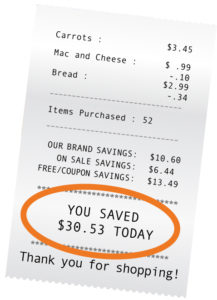 With Lidl’s recent launch in the U.S., Aldi’s expansion and the growth of consumables at dollar stores, the competition for Americans’ grocery dollars continues to heat up—especially in the value market. This naturally raises the question: how can traditional grocery retailers keep up without slashing prices across the board? The answer may lie in private brands.
With Lidl’s recent launch in the U.S., Aldi’s expansion and the growth of consumables at dollar stores, the competition for Americans’ grocery dollars continues to heat up—especially in the value market. This naturally raises the question: how can traditional grocery retailers keep up without slashing prices across the board? The answer may lie in private brands.
“Creating a value tier brand can be an effective way for a retailer to provide cost savings to shoppers, while also expanding its reach to shopper segments that might not normally consider the retailer’s offering,” says Katie Burkhardt, Brand and Marketing Strategy Manager for Daymon.
However, it’s not simply a matter of adding low-priced SKUs to the shelf. According to Burkhardt, there’s a host of considerations, strategies and executional guidelines a retailer should follow in order to ensure success.
For starters, retailers need to be sure a private brand value tier is right for their stores and their shoppers. This means understanding who their shoppers are, what they buy, and what their motivations and attitudes are. It’s also important to understand that it’s no longer just paycheck-to-paycheck shoppers who seek out value brands for the lowest price, but also savvy shoppers looking for the best values and often shopping multiple tiers and even channels to do so.
“A grocer must also evaluate its private brand strategy with regard to its banner mission,” adds Burkhardt. “For example, offering a value tier might do more harm than good to overall banner equity if the retailer’s core strategy is to promote its private brands as being national brand equivalents.”
Finding the right balance between quality and price is critical as well. “If retailers sacrifice quality too much to get a low price, it could erode the quality perception of their other brands and even their banner as a whole,” Burkhardt explains.
When it comes to execution, a retailer needs to be mindful of clearly defining its value tier and differentiating those offerings from its national brand equivalent (NBE) tier. This includes considerations around:
- Product—The quality of a value brand product must be easily distinguished from that of an NBE. In categories where quality is homogeneous, such as commodities, the value brand could play as the sole offering competing on price. In categories where multiple quality tiers are applicable, such as ice cream and pasta sauce, a value brand offering must be noticeably lower quality compared to the NBE tier.
- Packaging—Value tier packaging should be differentiated through design and/or formats (such as fewer colors and/or less sophisticated sealing mechanisms) that convey value and reduce cost.
- Price—The value product must always be the lowest price on the shelf, even with NBE discounting.
- Placement—Value items should be given less prominence on shelf.
Burkhardt points to grocery chain Kroger as a best-in-class example of executing a consumer-centric value tier strategy. The retailer offers approximately 200 value tier brand items (versus approximately 4,000 items in its NBE brand) and uses different branding, ingredients and packaging to distinguish them. Opening price points typically set 45-60 percent below national brands grab shoppers’ attention, while cheerful branding and colorful, playful package designs offer a stark contrast to uninspired, generic packaging typically associated with a value tier, helping to reduce any potential stigma associated with purchasing a value brand.
One final warning Burkhardt is quick to share is that retailers shouldn’t rely solely on a value tier to compete with discounters. “Retailers like Aldi and Lidl are offering great prices on NBE products, not value tier products,” she explains. So while value tier prices might help draw shoppers in, retailers must realize it’s just one link in the chain. They also have to back that up better services, better engagement and better assortment to keep shoppers coming back.
To learn more about Daymon private brand development and strategy services, contact Katie Burkhardt, Brand and Marketing Strategy Manager, at kburkhardt@daymon.com.

